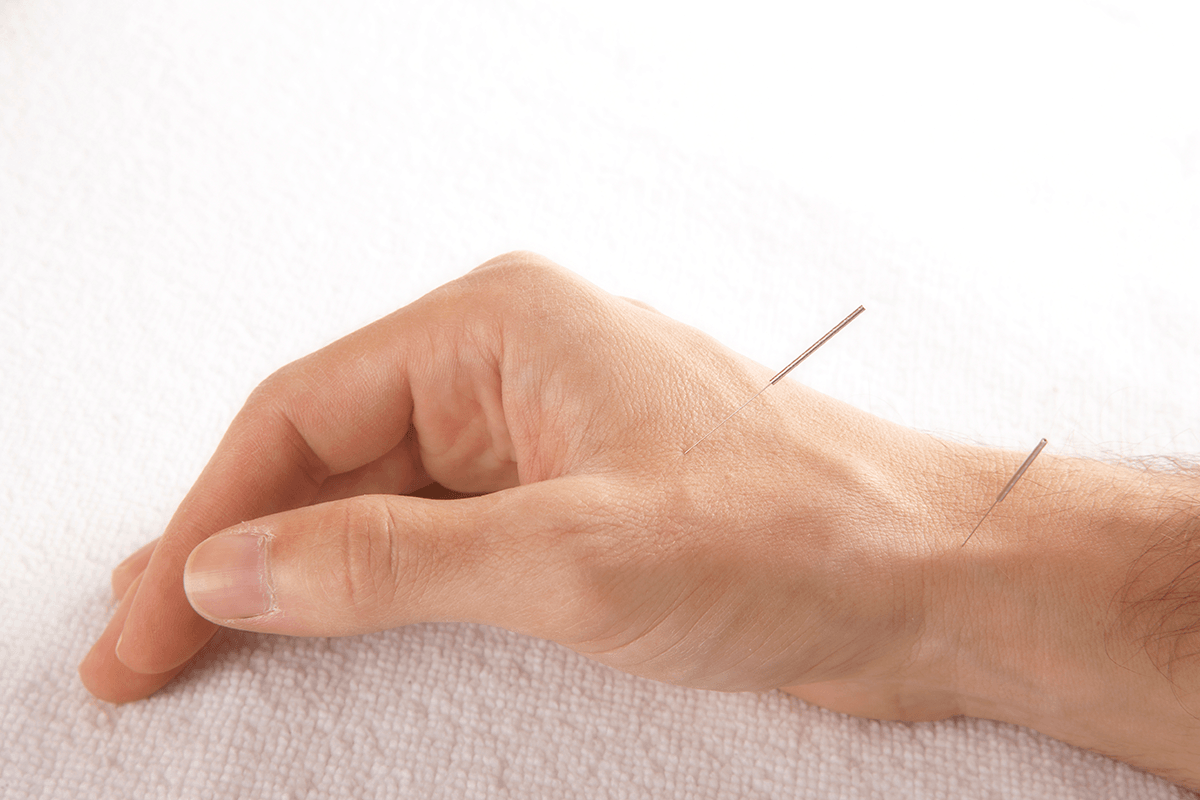As a patient, you expect to leave clinic feeling less pain than when you arrived. You want to leave feeling better and more relaxed. What many don’t expect is to come for acupuncture and have needles inserted in a different area to where you experience pain!
More often than not, I practice Distal Acupuncture. My patients experience enhanced benefits of acupuncture as they can relax and enjoy their treatments more. They also feel much more involved and proactive during their treatment as this style of acupuncture relies on direct and immediate feedback.
So what exactly is Distal Acupuncture?
Distal acupuncture places needles away from the area of pain or discomfort. Common examples are for knee complaints the needles often go in and around the elbows; painful shoulders respond well to needling the lower legs; and for headaches and migraines I commonly needle the feet.
This style of acupuncture was popularised in the West by two famous acupuncturists; Dr Tan, with his Balance Method, and Master Tung using his ‘Magical Points’. I had the privilege of training with Dr Tan and have also been fortunate to train with esteemed Tung practitioners Brad Whisnant and Susan Johnson.
Why do I practice Distal Acupuncture?
Distal Acupuncture has many benefits over traditional TCM body acupuncture or dry needling. For treating certain conditions I have found distal acupuncture to be superior and my patients experience the following benefits –
7 Benefits of Distal Acupuncture
1. No needles go in the affected area!
My patients never worry about further pain or discomfort when they come to see me. The affected, painful, inflamed or damaged area is never needled.
2. Accessible Areas
I frequently needle Transporting points. These are accessible acupuncture points located below the patient’s elbows and knees. I supplement these with points on the hands and head. There is no requirement for patients to undress. My patients remain comfortable and relaxed throughout treatment.
3. Faster Results.
I get direct feedback during the treatment and find out what patients are experiencing. Distal needling allows the patient to focus on the affected area, maybe move that part of the body while the needles are somewhere else, and compare feelings during and after treatment.
4. Fewer Needles
Each needle is very specifically placed. During needling I continuously ask for feedback on the level and location of pain as this usually alters during treatment.
5. Fewer Sessions
Treatment results are usually faster and less consolidation sessions are required. Especially when patients have treatments in quick succession.
6. Natural Healing
Distal acupuncture taps into the body’s natural healing system. As your nerves are denser below the elbow and knees, the central nervous system is stimulated to produce endogenous opioids*. There is also increased blood flow to a site of pain.
The release of these natural opioids can explain why Acupuncture not only treats pain; it adds to a person’s sense of wellbeing.
7. Supporting Treatments
Because the effected area is not needled, I can use supporting therapies such as Cupping, Gua-Sha and Moxa. The healing mechanism involved with using these targets the local tissue, muscles and blood supply.
* Such as enkephalins, beta-endorphins, norepinephrine, and acetylcholine

